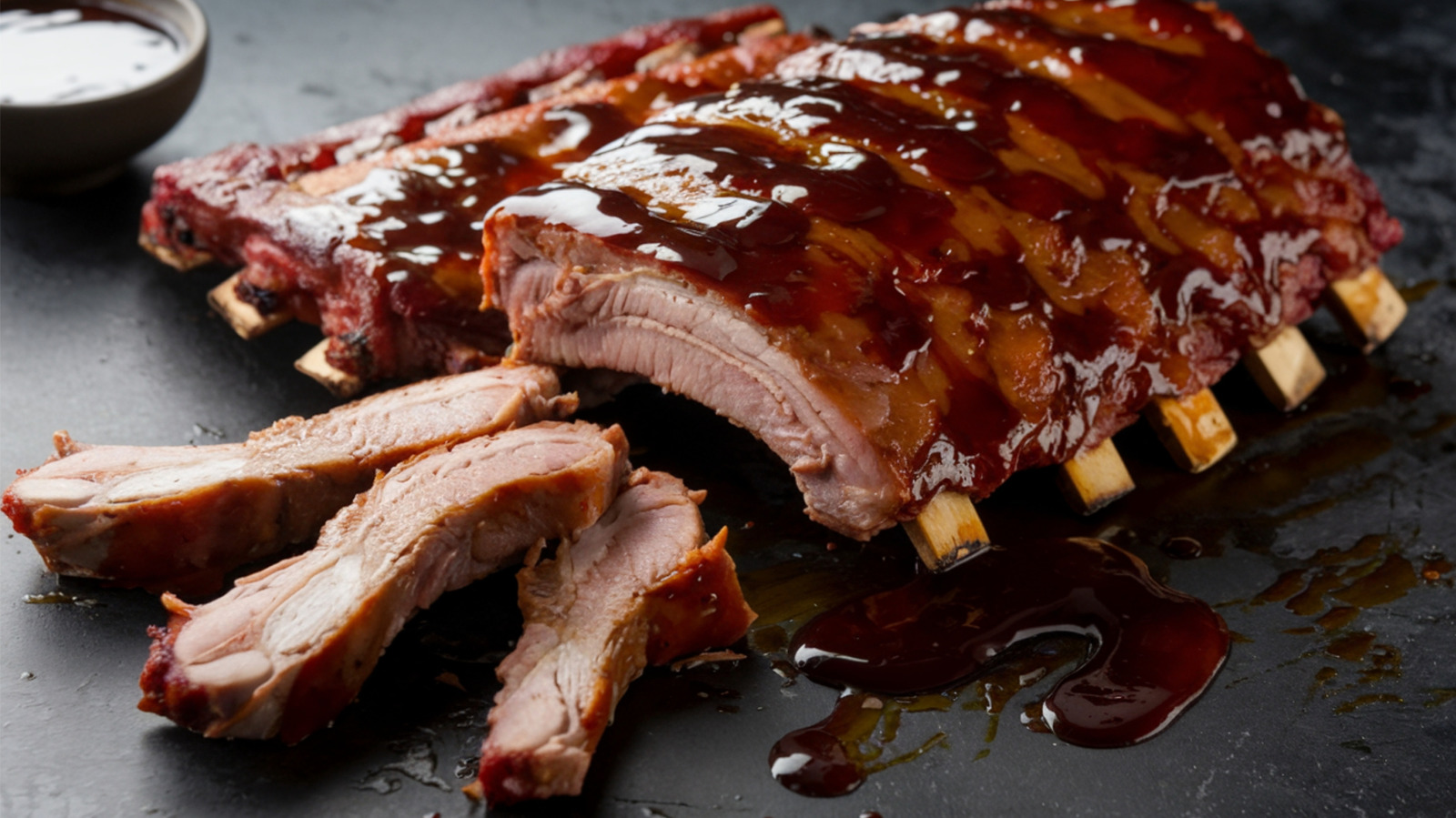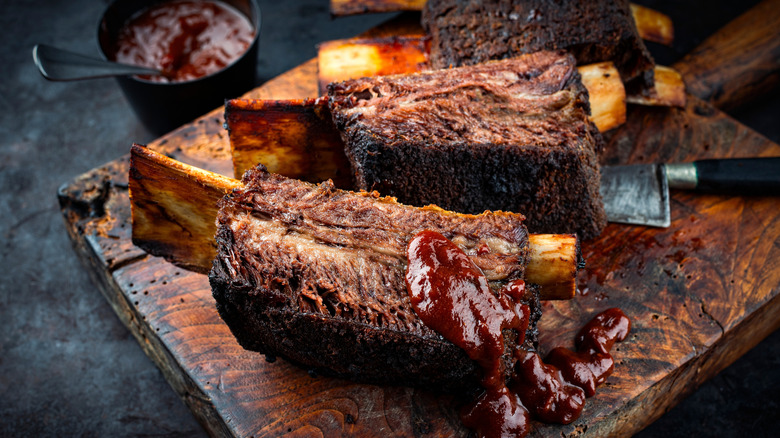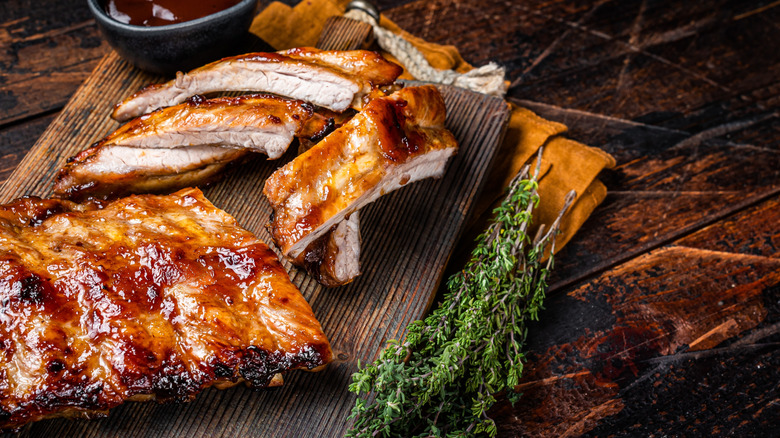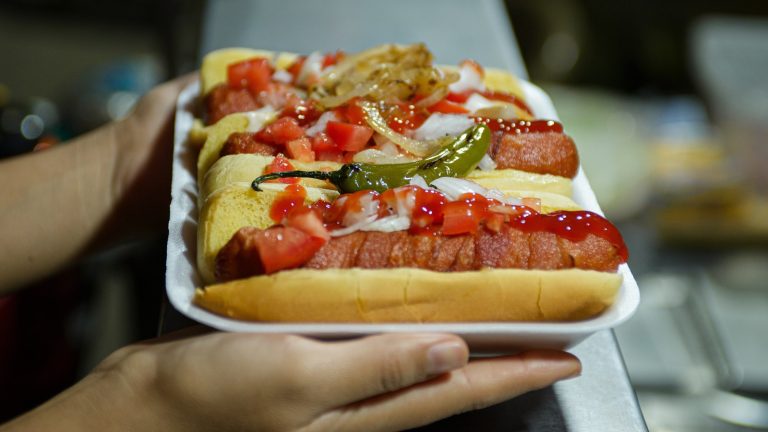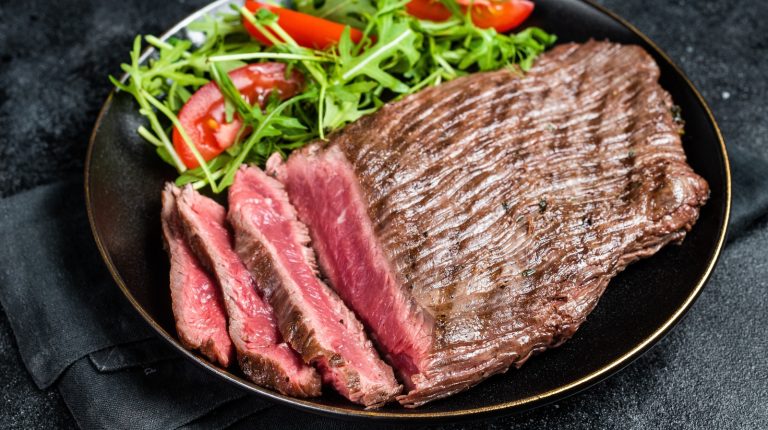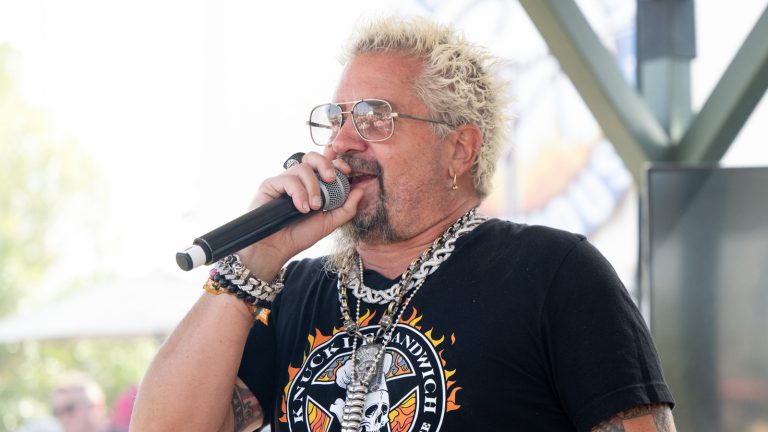If you’re interested in grilling, braising, or even cooking ribs in the oven, good on you; it’s a process, but one that can yield the most tender and satisfyingly succulent bite at the end. However, you might find yourself standing at the butcher shop or meat department at your local grocery store, paralyzed by choice and wondering if you should get beef ribs or go for pork ribs. Aside from the fact that they come from completely different animals, do they taste all that different? Or is one more or less like the other, flavor-wise?
Food Republic spoke to Nicole Johnson, recipe developer and outdoor cooking expert at Or Whatever You Do, for answers. “Beef ribs are way beefier in flavor,” she shared, adding that pork ribs “are sweeter [and] more delicate.” The difference is stark; you’ll know when you’re biting into a beef rib and when you’re enjoying one made of pork. It’s important to bear in mind, though, that one isn’t necessarily better than the other — it’s all a matter of personal preference. Perhaps, if you can’t decide, you should try both, so you can compare and contrast and ultimately decide which type of ribs best suits your palate.
Beef ribs are bigger and more robust
Along with tasting more beefy, beef ribs are “much more marbled, and thicker overall,” Nicole Johnson shared. This means they generally have a greater fat content, and tend to also be longer than pork ribs. “They can take heavier rubs and longer cooks, and they shine when smoked low and slow,” Johnson added. Indeed, because of their bigger size and greater amount of proteins, beef ribs generally take longer to cook than their pork counterparts — not just to cook through, but also to break down the connective tissues so the meat is fully tender.
When seasoning beef ribs, Johnson said she leans savory, and despite their capacity for stronger rubs, often just uses salt, pepper, and garlic. “Beef plate ribs (sometimes called dino ribs) are best done like brisket,” she said. “Slow, low, unwrapped, and well-rested.” Short ribs, she added, “benefit from braising or sous vide plus a quick smoke or sear for finish.”
Pork ribs are smaller and sweeter
According to Nicole Johnson, pork ribs have a natural sweetness that beef ribs simply do not, and their more mild taste is comparable to char-laden pork chops (though, unlike ribs, you should think twice before grilling this lean meat). Because of their innate sweetness, Johnson said, you can go sweeter on the seasoning. This is the time to break out the rubs with brown sugar, but for balance, you’ll also want smokiness from paprika and/or cumin, as well as a kiss of spice from chili or cayenne powder.
Johnson also shared that pork spare ribs need less time and smoke than their beefy counterparts. Like briskets, they do great with the 3-2-1 method of cooking, plus “a good mop or glaze at the end.” The 3-2-1 method refers to the hours for each stage of the grilling process: three hours unwrapped, two wrapped with aluminum foil, and one unwrapped again — but this time coated in sauce. She did advise, though, that baby back ribs’ cook times should be adjusted, as they “are better at 2-2-1, or even a straightforward smoke without wrapping if you want bite-through ribs.”

